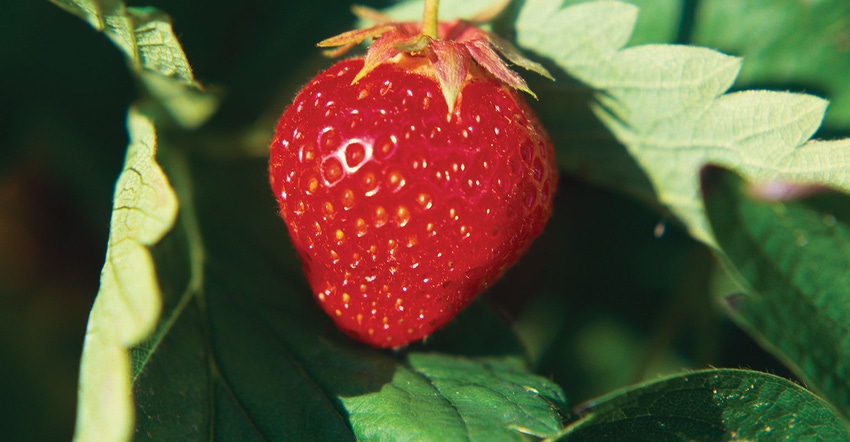December 1, 2018

Sponsored Content
In the Salinas Valley, strawberry growers are very familiar with powdery mildew and Botrytis. With varying microclimates in the area and increasing resistance issues, growers are constantly reminded of how damaging these diseases can be for their bottom lines. Tools many growers use to help manage these issues are biological fungicides. Unfortunately, some growers have had a difficult time successfully implementing biological products into their programs.
“In strawberry production, the canopy of the plant can hold a lot of moisture and raise humidity, which can impact the effectiveness of some biologicals. In many cases, the canopy microclimate conditions we see in Salinas Valley reduce the efficacy of some biologicals, resulting in a spray that acts more like water than an actual chemistry,” explains Mila Pearce, BASF Product Manager. “It’s important that growers use a product that is optimized in its formulation and applied early in order to remain as effective as possible.”
Pearce recommends growers look for a product that has a formulation that fits easily in their established crop protection programs. A product many growers have seen success with is Serifel® biofungicide from BASF.
“A key differentiator of Serifel biofungicide is its formulation, which means the product starts off on the right foot when it’s applied according to the label,” said Pearce. “A grower needs to understand that these are living organisms that are constantly communicating with each other. Choosing the right formulation is important since these bacteria need to correctly identify their environment for optimal performance.”
Pearce explains that resting bacterial spores in Serifel biofungicide have the ability to withstand extreme temperatures and UV light equivalent to what is seen at the equator for seven days straight during testing. On top of that, Serifel biofungicide is rainfast within three hours. While the conditions of this trial are more extreme than what happens in the area, the trials help assure growers that the product can be effective in their fields.
Flexible Formulation
Serifel biofungicide can be beneficial in another way for growers: It can be used in conventional and in organic production growing systems.
“Many growers in the Salinas Valley work both in the conventional strawberry market as well as the organic strawberry market,” notes Pearce. “Serifel biofungicide has a unique resistance message in that we have proven the formulation is effective on resistant pathogens giving conventional chemistries an opportunity to work like the first day they sold on the market. This is more than just another rotational partner, it has a unique role in crop protection.”
From helping reduce resistance in fields to its hearty formulation, Serifel biofungicide can be an excellent addition to an established crop protection program. To learn more about Serifel biofungicide and biological crop protection, contact your local BASF representative.
Always read and follow label directions.
Serifel is a registered trademark of BASF. © 2018 BASF Corporation. All rights reserved.
About the Author(s)
You May Also Like




